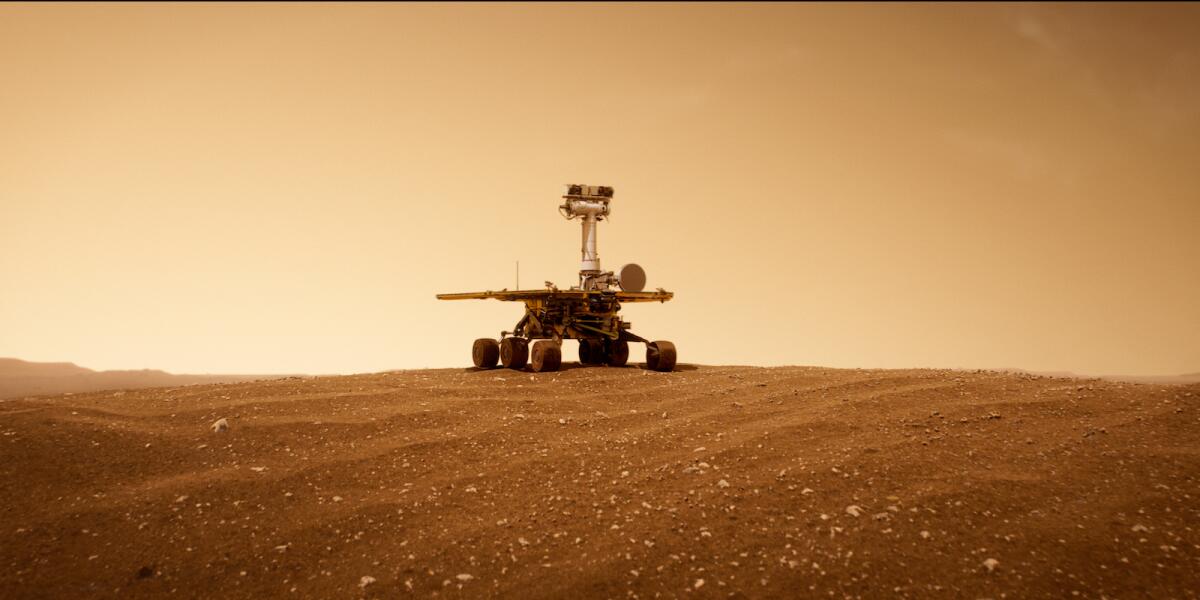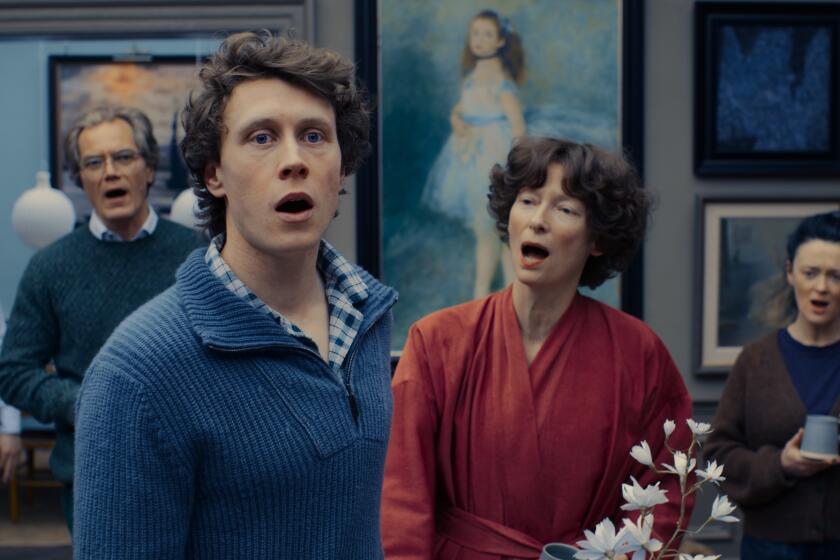Review: A herculean human effort plus two cute robots equals triumph for ‘Good Night Oppy’

Great true stories about space exploration don’t come around too often anymore. Our pop cultural representations about NASA’s achievements (or failures) tend to be period pieces and retreads of the greatest hits. But the new documentary “Good Night Oppy,” directed by Ryan White, is an exciting and fresh story about a more recent mission to Mars, one that exceeded all expectations and then some, thanks to hard work, ingenuity, a lot of luck and dogged perseverance.
Produced by, among others, Amazon Studios, Amblin Entertainment and Industrial Light and Magic, “Good Night Oppy” is a documentary that aims to capture the sense of childlike wonder and expansive, imaginative scope akin to the films for which Amblin and ILM are known. The amazing story of the Mars Exploration Rover mission manages to feel emotionally like “E.T.” and look like “Star Wars.”
For your safety
The Times is committed to reviewing theatrical film releases during the COVID-19 pandemic. Because moviegoing carries risks during this time, we remind readers to follow health and safety guidelines as outlined by the CDC and local health officials.
The Mars rovers were the brainchild of geologist and astronomer Steve Squyres, who grew tired of exploring the farthest reaches of the Earth and dreamed of exploring Mars, imagining that a robotic rover could travel to the red planet in his stead. After years of proposals, NASA finally gave the OK to develop twin rovers, Spirit and Opportunity, which were launched in 2003 to search for evidence of water — evidence of life — on Mars.
The mission was intended to last 90 days (or Martian “sols”) but miraculously went on for 16 years, thanks to unexpected bouts of luck when the rovers reached the planet. White and co-writer Helen Kearns tell the story through well-curated and edited archival footage and interviews with a group of diverse and engaging NASA scientists and engineers who dedicated almost two decades of their lives to the journey of these rovers.
In every interview with the people who dreamed up, built and guided the rovers along their way, White and Kearns take care to foreground the human stories, about their childhoods and families, their sparks of inspiration. The jargon never gets too technical, and the scientists and engineers are more than happy to anthropomorphize the rovers, whom they speak about with great affection, often likening the rovers to their children or identifying closely with them. Spirit is “rugged and scrappy,” while Opportunity is “Little Miss Perfect.” The affection and care the humans feel for the robots is clearly part of the secret sauce that made this mission so successful.
When Spirit and Opportunity landed, they each set off to collect and analyze samples, photograph the landscape of Mars and explore the planet like curious tourists. Carefully navigated by the humans (or “earthlings” as they refer to themselves) located at the NASA Jet Propulsion Laboratory in Southern California, Spirit and Oppy endured dust storms and winter freeze, running into bits of unbelievable luck and frustrating hang-ups along the way.
Among the most effective tools in White’s storytelling arsenal are the “wake-up” songs the team at JPL play for the rovers, and for their teammates, working on a brutal schedule to keep the rovers moving. The soundtrack is littered with everything from bops (“Walkin’ on Sunshine”) to ballads (ABBA’s “S.O.S”) that lift the mood or pull at the heartstrings.
As a filmmaker, White subsumes his own point of view, and the film never takes any critical or contrary stance toward its subject matter. At times, it feels like an infomercial or recruitment video, helping to demonstrate the function of NASA in this modern era while recounting the unlikely astronomical success of this mission. Much of the filmmaking is focused on making this story accessible and interesting to a wide audience, especially kids, and a storyline about the generations of students who watched the launch and later went on to work on the mission is a subtle way to beckon future aerospace scientists and engineers into the fold.
Despite the somewhat bland nature of the storytelling — it’s not like this documentary is pushing the boundaries of the form — it’s an incredible true story told with care and skill. It would be shocking if one doesn’t shed a tear or two at the sheer triumph of it all, the result of herculean human effort, teamwork, and two cute little robots.
Katie Walsh is a Tribune News Service film critic.
'Good Night Oppy'
Rated: PG, for some mild language
Running time: 1 hour, 45 minutes
Playing: Starts Nov. 4, Regal L.A. Live, downtown Los Angeles; New Port Theater, Corona del Mar; available Nov. 23 on Amazon Prime Video
More to Read
Only good movies
Get the Indie Focus newsletter, Mark Olsen's weekly guide to the world of cinema.
You may occasionally receive promotional content from the Los Angeles Times.









